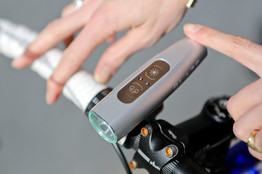Originally posted on Wall Street Journal: A hardware startup is still hard, but it is getting a little easier.
Venture Money Flows Into Hardware

The growing availability of 3-D printers and starter kits with easy-to-program circuit boards makes it simpler and cheaper to produce prototypes. Contract manufacturers stand ready to handle mass production and unravel supply-chain tangles. New fundraising techniques help entrepreneurs get started and test demand.
U.S. venture capitalists put $848 million into hardware startups like Jawbone and Roku in 2013, nearly twice the prior record. The money, and help from contract manufacturers, is making it a bit easier to launch.
Only 3% of U.S. venture-capital investment was for hardware start-ups last year, but that represents a big increase from 1992–2011, when the figure was less than 1%, says the Wall Street Journal. Investors have long shied away from start-ups making gadgets such as wearable electronics, because of the challenges posed by manufacturing, distribution, inventory, and technical support. But help has arrived: Today’s contract manufacturers, such as PCH International, will not only make your product for you, they’ll also provide engineers and project managers in China; as a consequence, U.S. venture capitalists are taking a rosier view of hardware start-ups.
Dawn of a golden age of hardware
“It’s definitely the dawn of a golden age of hardware,” said Scott Miller, chief executive of Cambridge, Mass.-based Dragon Innovation Inc., which advises hardware startups and helps them raise money.
Success stories help fuel the surge. Google Inc. paid $3.2 billion in February to acquire Nest Labs Inc., a maker of Internet-connected thermostats and smoke alarms founded in 2010 by ex-Apple Inc. employees. Like many device startups, Nest takes advantage of the displays and apps of smartphones, sparing developers the time and expense of creating a separate remote control. Last month, GoPro Inc., a maker of wearable cameras, submitted a confidential filing for an initial public offering, aiming to raise about $400 million, according to people familiar with the matter.
Venture capitalists have long shied away from hardware startups, which accounted for less than 1% of total investment each year from 1992 to 2011. Any new venture is risky, but hardware companies must build a product and master the logistics of supply and distribution chains. Even with the recent surge, last year’s record total accounted for less than 3% of total venture-capital investment in 2013.
“You can lose a lot of money fast in a hardware business if you do it wrong, and most people do it wrong,” said Randy Komisar, a partner at venture-capital firm Kleiner Perkins Caufield & Byers and an early investor in Nest.
Mr. Komisar, an Apple executive in the 1980s, said hardware startups can create a product for a fraction of what it would have cost 20 years ago. “But building it is not the hardest part,” he continued. “It’s making it, distributing it, managing inventory, managing distribution through the channel, understanding the market and supporting the product…This is really difficult stuff.”
Take Instacube, a digital picture frame that streams images from Facebook and photo-sharing app Instagram. Backers raised $621,000 in four months on Kickstarter, a crowdfunding site, from customers placing preorders. Instacube missed its initial March 2013 shipment date, citing difficulties in producing the hardware abroad, and sparking criticism from investors. After a management change at Instacube, the device is expected to ship next month.
Sensing an opportunity, contract manufacturers and consultants are joining forces with younger hardware companies than previously.
Flextronics International Ltd., which generated $24 billion in 2013 revenue making products for Apple, Microsoft Corp. and others, started Lab IX last year to offer design and engineering support for startups shifting to mass production. Flextronics invested in four startups last year, including OMsignal, which weaves sensors into a compression shirt to measure heartbeat or breathing rate.
Mike McNamara, Flextronics’ CEO, said the company is more inclined to work with startups at earlier stages than in the past, when it took longer for companies to build working prototypes.
Liam Casey hopes to uncover the next Nest in San Francisco’s design district. The Irish entrepreneur, dubbed “Mr. China” in a magazine profile for his deep knowledge of the country’s factories, founded contract manufacturer PCH International Ltd. in 1996. His customers now include Apple, Google and Beats Electronics LLC.
This year, Mr. Casey opened a development studio in an old warehouse and equipped it with 3-D printers and computerized machine tools. Mr. Casey said he hopes to win over Silicon Valley entrepreneurs by eliminating some complications of running a hardware business.
This support system is nurturing a new generation of entrepreneurs. While a design-school student in Brighton, England, Emily Brooke conceived the Laserlight, a bicycle lamp that projects a green laser image of a bike more than 15 feet ahead to reduce the chances of a collision.
Ms. Brooke, 28, had no real experience in manufacturing, and initially thought she would license the design to a maker of bike accessories. She raised £55,000 ($92,000) in a month from small investors on Kickstarter, and considered hiring factories in China directly to make the lamps. But she ultimately decided to join PCH’s accelerator program.
In exchange for less than 5% of equity, PCH provided her company, Blaze, with a team of 10 engineers and project managers in China. Making the lights proved far more complicated than she anticipated—the aluminum casing required 17 steps in three factories. “How we ever thought we could do this on our own is a joke,” said Ms. Brooke.
PCH’s backing also helped her negotiate better payment terms with suppliers than startups typically get. Ms. Brooke started shipping her lights to customers in January. Blaze sells the lights through its site and PCH’s own retail site, Shoplocket, so the company doesn’t have to carry inventory, a costly necessity when dealing with large retailers.






